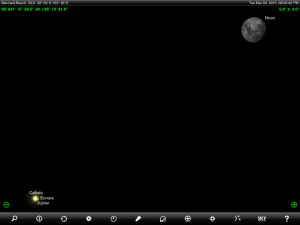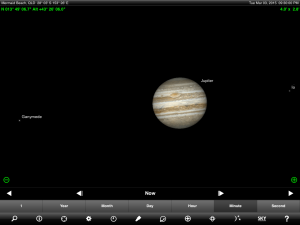(Posted 1 March 2015) Look above the North Eastern horizon over the next few nights and you will notice a very bright star near the Moon.

That bright star is really the planet Jupiter. Dust off your binoculars or that unused telescope you bought last Christmas and you will be rewarded with a view of the largest planet in our solar system (note that there are many larger planets in the other 1,189 solar systems in our galaxy).

As an added bonus, Jupiter’s Great Red Spot is perfectly placed for viewing in the early evening of Tuesday 3 March 2015 Australian Eastern Standard Time. This giant (two to three Earth sized) anticyclone storm unfortunately does not currently live up to its colourful name at present as it is more of a pale salmon colour. You will need a telescope to view this giant storm. If you miss looking at the storm Tuesday night, you will need to recalculate when to look for it due to the fact that Jupiter completes one rotation approximately every nine hours and fifty five minutes. This site will calculate when the Great Red Spot is next visible.
1 thought on “Moon passes Jupiter 2 – 4 March 2015 / Great Red Spot visible Tuesday night through a telescope”